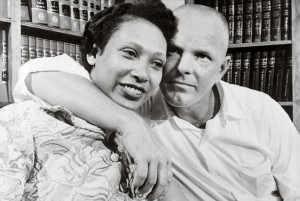
A new study compares coverage of the 1967 US Supreme Court case that legalized interracial marriage in historically black newspapers and their mainstream counterparts.
The researchers were surprised by the findings, as they had hypothesized that black newspapers would be more sympathetic to the racially mixed couple who challenged the law inLoving v. Virginia.
Historically, the African-American press is an advocate for civil rights, says Geri Alumit Zeldes, associate professor of journalism at Michigan State University.
“Just knowing how the ethnic press operates, we thought they were going to be very one-sided in favor of the Lovings,” she says. “But they followed the same pattern as the mainstream media such as the New York Times and others.”
Zeldes says one of the lessons learned from this, something that hasn’t changed since the first newspaper was printed, is that news is a cultural mirror of what is going on in society at that point in time.
“If you take a look at the newspapers at the time they were published, they will give you hints as to what the times were like,” she says. “So if we look at the black press at that time period, you can get a sense of what the black community was thinking because those reporters were part of that community.”
Zeldes says that by reviewing the newspapers’ stances on the issue, it gives us a clue to the political and cultural mood of the time.
“It indicates,” she says, “that some segments of society in the late 1960s were ready to lessen social and cultural marriage restrictions, but that other groups in the United States were still undecided.”
As today’s journalists report on civil rights issues—namely same-sex marriage, racial equality, and economic injustice—they should keep in mind that they are historians, Zeldes says.
“Fifty years from now, media scholars will unearth news stories to deconstruct them, aiming to learn about public opinion during that time,” she says. “In that sense, journalists need to approach their stories as living documents, perhaps by providing voice to not just one side, but the multiple sides operating in these complex issues.”
Details of the research appear in the Journal of Social Issues.
Source: Michigan State University and Futurity.org








